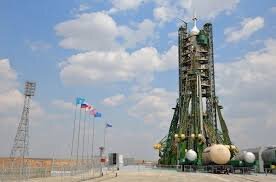Iran ready to operate solid-fuel launcher as part of natl. space program

TEHRAN – The Iranian Space Agency says phase one of the Chabahar Space Base is undergoing final completion.
Phase One of the project is specially designed for solid-fuel launchers and preparations are underway for the first launch, said head of the agency Hassan Salarieh.
“We hope to break ground for phase two of the base as well,” he added.
“Designs pertaining to the project have been done. Phase two of the base will be constructed to launch liquid-fuel satellite carriers,” he noted.
He underlined that liquid-fuel launchers are capable of carrying heavier loads and will be used to put heavier satellites into orbit and conduct “multiple launches.”
Highlighting the progress in research and development, Salarieh said Iran has advanced the design of a new generation of reentry capsules and experimental research platforms, capable of conducting suborbital and orbital life science tests, including studies on radiation, temperature, and pressure effects on living organisms.
Solid fuel is ideal for launchers as well as military ballistic missiles due to its long-term storage capability, rapid preparation, and lack of need for complex refueling infrastructure.
Iran’s space program is expected to include multiple domestic and international launches this year, covering remote-sensing, communications, and experimental satellites, with precise launch dates subject to technical readiness.
Following the successful launch of a 500-kilogram reentry capsule in 2023, new prototypes are now under development, with subsystem testing scheduled to begin soon.
Iran's space program, embodying national resilience and technological prowess, is poised for a landmark year with the planned launches of its advanced Kowsar, Zafar, and Paya satellites.
Together, these spacecraft will form a sophisticated constellation designed to revolutionize the country’s growing capabilities in earth observation, precision agriculture, and environmental monitoring.
Iran’s space program bears testament to phenomenal scientific progress, having achieved remarkable technological breakthroughs despite decades of illegal Western-imposed sanctions.
The planned launches of the Kowsar 1.5, Zafar, and Paya satellites within the current Iranian calendar year mark a major milestone, demonstrating the nation’s growing self-reliance.
These satellites, developed by Iranian engineers associated with various knowledge-based companies in collaboration with the Iranian Space Agency, reflect a strategic push to establish an independent satellite constellation that will support agricultural, environmental, and surveillance needs.
This ambitious program highlights the country’s efforts to deepen strategic space cooperation with international partners, cementing its position as an emerging leader in space technology.
The Kowsar 1.5 satellite is an advanced, upgraded version of its predecessor, representing a significant step forward in Iran’s space-based remote sensing capabilities.
This state-of-the-art satellite is designed for high-resolution imaging with a primary focus on precision agriculture. It will provide daily imagery of plant greenery every 24 hours, supporting agricultural monitoring, crop health assessment, and efficient resource management.
The Zafar satellite marks another significant landmark in Iran’s space program. It is an advanced earth-observation satellite designed to provide high-resolution imaging for critical applications in agriculture, environmental monitoring, and disaster management.
Developed by the Iran University of Science and Technology (IUST) in partnership with the Iranian Space Agency, the project exemplifies the powerful collaboration between Iran’s academic institutions and its governmental space bodies.
The Paya satellite completes this trio of advanced spacecraft, serving as an earth-observation satellite designed for sophisticated imaging and data collection.
It will complement the Kowsar and Zafar satellites in agricultural, environmental, and surveillance applications, strengthening Iran’s integrated satellite constellation.
Leave a Comment